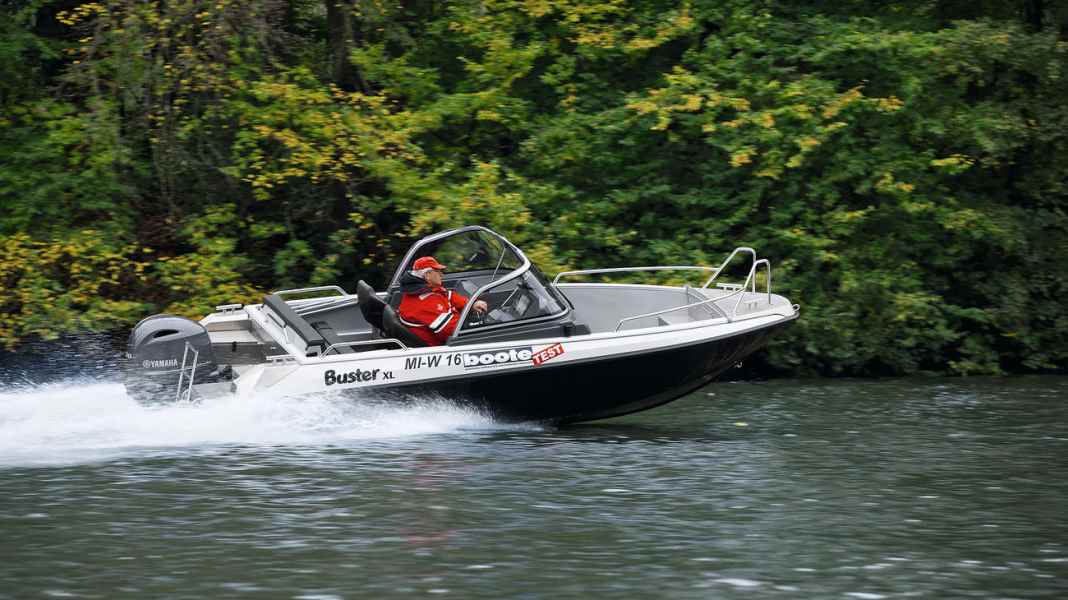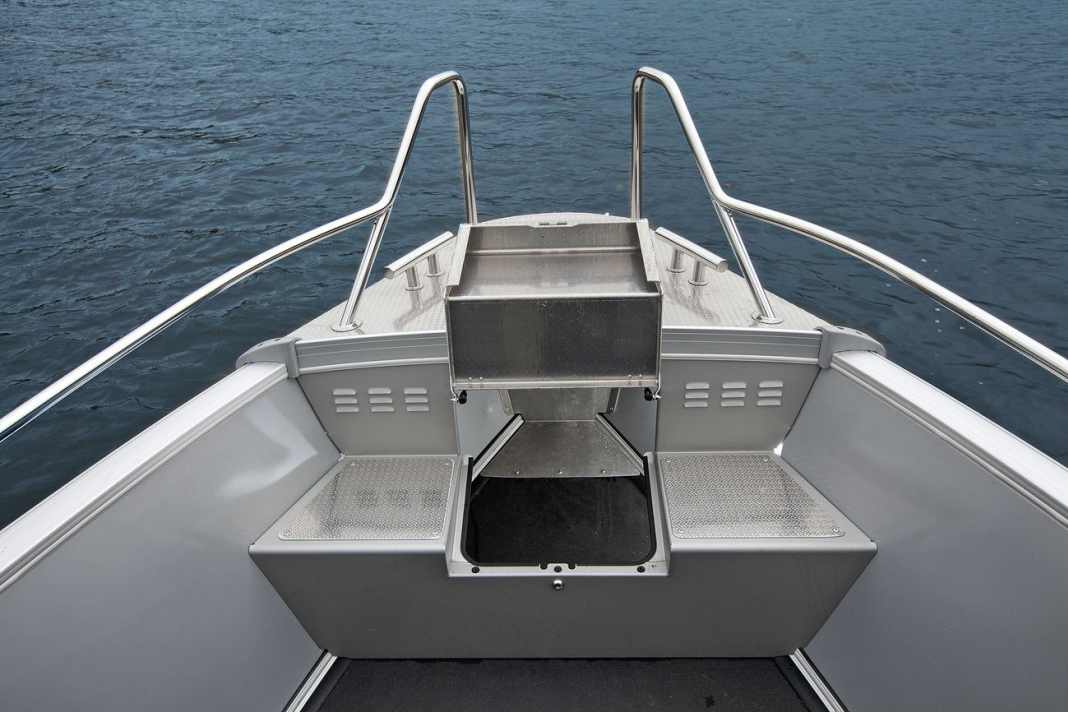
The Finnish shipyard Buster buildsAluminium boats for outboard motors and is the market leader in Europe. Thanks to marine aluminium, the boats are Extremely robustpromise besideshigh strength minimal weight andHighest resistance against salt water.






The model range includestwenty boats from four to almost ten metres in length, with and without cab. The smallest model can handle from two and the largest up to two times 350 hp.
Except for the completeopen mini all models withopen bow as bowrider for leisure captains, with or without seating at the front, asMulti-purpose or work boats offered.
Or as someone at the shipyard once said: "Buster boats are not for those whose wish list centres on luxury, but a robust tools for the entire season.
The test boat is available in the XL and XL Pro versions. One distinguishing feature is the bow railing, which consists of two handrails plus a separate pulpit on the XL and is combined as a handrail on the Pro. As a subsidiary ofYamaha Europe the question of which engine is primarily used to drive the rear is also superfluous.
We don't ride the Pro with the smallest (70 hp), but with the maximum possible power, a 130-hp Yamaha four-stroke engine. And this combination is also ideal forTrailer captains interesting for those who are not allowed to take so much on the hook. All you need is a trailer thatup to 1000 kg may be loaded.
Between the jetty we let the engine turn at 1000 rpm and chug along at a speed of 3 knots. To keep the waves generated by the hull at an acceptable height, we limit the engine speed to 1500 rpm (5 knots).
If there is not too strong a crosswind and no-one in the boat changes places, the boat will go straight ahead. When travelling in reverse, you need to make one or two course corrections, and it takes 5-10 seconds for the bow to swing round when reversing. Turning circles measure about two boat lengths at the speeds with both forward and reverse gears engaged.
With the engine fully trimmed, the test boat starts planing at around 2600 rpm or 7.5 knots, which means 3000 rpm or 9 knots for the lowest planing speed. While the transition from displacement to planing runs without any visual obstruction with the engine trimmed to beige, the latter is briefly interrupted with the engine optimally trimmed.
We measured the top speed at just under 37.5 knots, while the engine remains around 200 rpm below the maximum speed. The test boat completed the sprint from 0-60 km/h in 10.7 seconds. According to our measurement results, the test boat is most economical when travelling at a fast planing speed of 18 kn or 3500 rpm.
One tank of fuel is then sufficient for a theoretical range of 119 nm plus 15% reserve, which we rate as "good". At slow speed, you can travel about 122 nm and at full throttle 70 nm, plus reserves in each case. The sound pressure exceeds the limit of 85 dB/A from 4500 rpm.
Buster completely dispenses with planing steps on the hull and is, so to speak, smooth from bow to stern. As a result, the righting moment is somewhat lacking when planing, which causes the boat to heel more or less to starboard, depending on the weight of the skipper. As in the test boat, this can be easily compensated for with the hydraulic trim tabs.
Otherwise, trim tabs help to optimise the trim position even when the boat is loaded differently or in strong crosswinds with the canopy up. Non-existent planing steps can also prevent the boat from "seizing up" when the boat is being driven at extreme speeds, such as during fast 180° turns or abrupt course changes.
In short, there are no complaints during all extreme manoeuvres at top speed. The boat reacts safely and stays dry. Our test area is the River Main near Schweinfurt, which means we have to make do with what commercial shipping has to offer in rough water or waves.
And our test boat has no problems with this. Skipper and co. sit safely and comfortably in well-dimensioned and adjustable bucket seats behind a decent windscreen. Access to the front is closed by a door, so there are no draughts. The driving position is equipped with a compass (extra) and the Q touchscreen monitor developed by Buster itself as standard. Two windscreen wipers provide visibility in the rain. The steering is hydraulic.
The shipyard says that the XL Pro is unsinkable and primarily intended for sport fishermen, which is why there are no seats at the front or standard cockpit ventilation outboard. The latter is also the reason why there is only an electric, and not a manual, bilge pump.
Storage space is provided by both consoles, the stern bench, storage boxes next to the engine sump and the step in the bow, which also serves as an anchor locker. The technical and electrical installations are impressive. A pre-filter without a water alarm but with a sight glass and a battery box with battery, fuses and main switch are easily accessible under the stern bench.
Thanks to steps and a suitable handhold, you can get into the boat from all sides. Only four cleats and navigation lights, which are not authorised everywhere in Germany, are downgraded. The same applies to the compass, canopy and tarpaulin, which are not included as standard.

